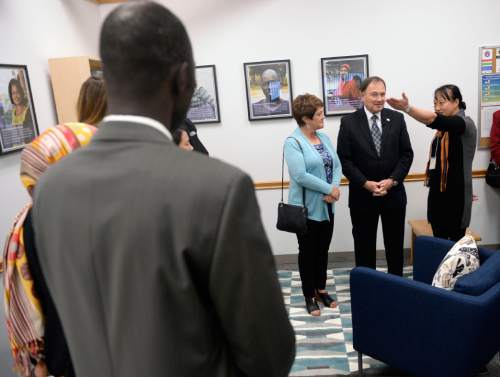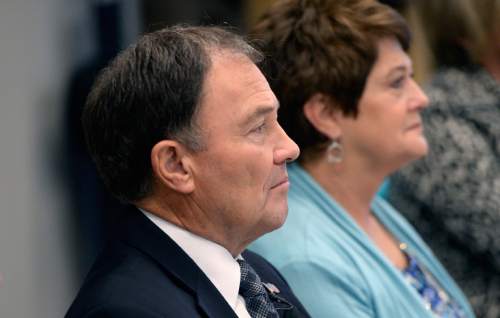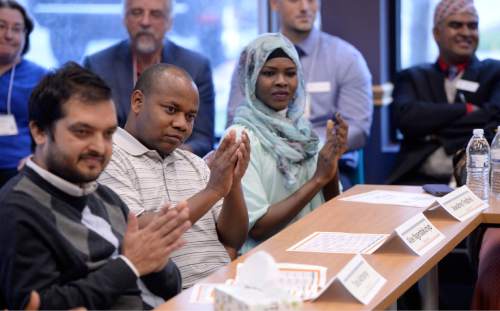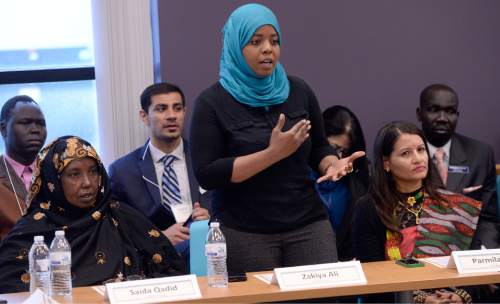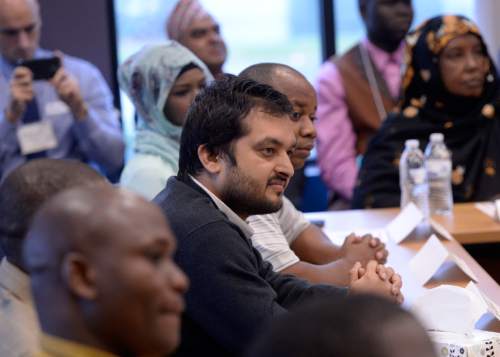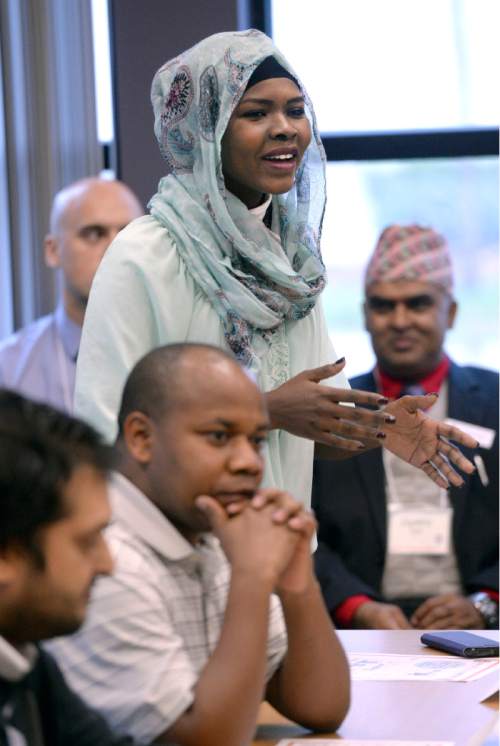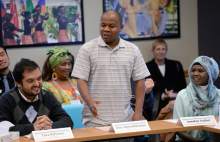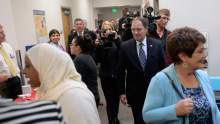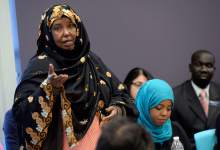This is an archived article that was published on sltrib.com in 2015, and information in the article may be outdated. It is provided only for personal research purposes and may not be reprinted.
South Salt Lake • Imagine moving to a country where you didn't know the language and had few, if any, job skills; where getting training seemed daunting and everyone was always on a computer, but you had no idea why.
It'd be helpful if there was one place to go, where people understood your experience and were there to set you on a path to self-sufficiency.
That's what Utah's refugees said they wanted in a survey commissioned by the state, and it's what the government has sought to create.
The Utah Refugee Education and Training Center opened in May as part of Salt Lake Community College's Meadowbrook Campus, offering language and computer classes, vocational training and job counseling. Soon it will offer child-care assistance and a kitchen to help refugees interested in opening their own restaurants.
"This is a dream come true," said Anet Akot, who moved to Utah from South Sudan 16 years ago. "And I'm a little jealous. I came in 1999, and we didn't have a place like this."
Akot, a driver for a private car service, was speaking to Gov. Gary Herbert, who attended a roundtable with refugees Tuesday as part of a kickoff event for the facility.
Akot sees this as a place where refugees can learn from one another and integrate faster into the broader Utah society.
Herbert and his wife, Jeanette, listened as refugees from Somalia, Bhutan, Burma, Liberia and elsewhere thanked him for his role in creating the center. They also asked the governor to meet with refugees regularly and provide more resources to the facility. Tee Mu, a refugee from Myanmar, suggested creating a cultural hall where refugees could "show their talents" through dance and song.
Herbert told these refugees that he'd keep them in their thoughts and would meet more than once a year. He hoped they felt welcome in the state, and he saw the center as not a series of programs, but a place to help individuals.
"It is really about the people. We want you to help yourselves improve your life," he said. "We promise, here in Utah, you will have opportunity. ... You have people here who care and love you."
Utah is home to about 60,000 refugees and adds about 1,100 each year. The largest groups are coming from Iraq, Somalia, Myanmar and soon Syria. Each refugee family has the help of a case worker from the International Rescue Committee or Catholic Community Services for the first two years, but many of these displaced people have found that other services offered to them were scattered and hard to navigate.
The state Department of Workforce Services commissioned a study from Utah State University that involved detailed surveys of refugees. As expected, it found that refugees do not want to be reliant on the government. They want to work, learn the language and give their children a chance to attend college, though it is not always easy.
Learning English is consistently the hardest part.
Parmila Dulal, a refugee from Bhutan, moved to Utah seven years ago. She largely learned the language through friends she made at Primary Children's Hospital, where she works as part of the cleaning staff. Her two children, a 21-year-old son and an 18-year-old daughter, are studying biomedical engineering at the University of Utah, which clearly makes her proud.
Dulal sees the facility as a place for the refugee community to gather as much as learn, and like many in the study, she said before it opened its doors, "we had too many places."
Herbert heard from successful refugees who are leaders in their respective communities, people like Newton Gborway, a Liberian refugee who has lived here for 14 years. He received his master's degree in social work from the University of Utah and works for Salt Lake County's criminal justice services. He is the coach of the Lonestar soccer team, made up of fellow Liberians.
The state hopes to help more refugees achieve what Gborway has, gaining a decent-paying job and a place in broader society. Many refugees remain at the lower end of the wage scale, making about $9 per hour. The state's goal is to get more of them to the $16-per-hour mark, which allows the average family to afford rent, health care and other basic costs.
Pamela Atkinson, a community activist who has long worked on issues pertaining to the homeless, serves on the center's advisory board. She described the facility as a way for the state to say thank you to these new residents who came from war-torn or dangerous parts of the world.
How to help
Volunteer • The Utah Refugee Education and Training Center at 250 W. 3900 South will hold two volunteer orientations: the first is Saturday, November 21 from 10 a.m. to 1 p.m; the second training is Saturday, Jan. 9, from 10 a.m. to 1 p.m.
Donate • The center, as well as the International Rescue Committee and Catholic Community Services, among others, accept cash donations that help pay rent for recent refugees as well as goods such as diapers, feminine-hygiene products, toiletries and household supplies. Those interested can contact refugeeoffice@utah.gov for more information.


